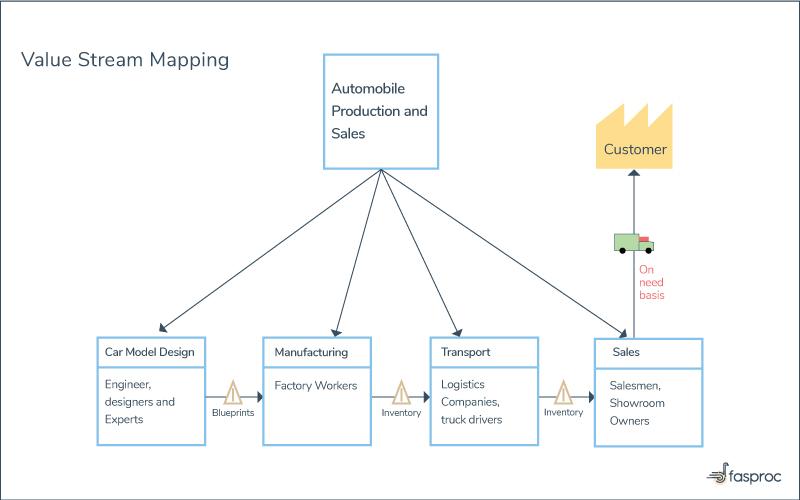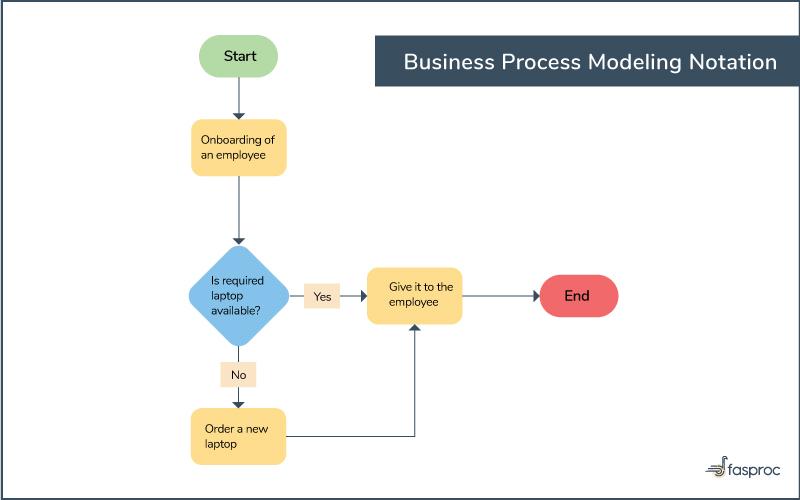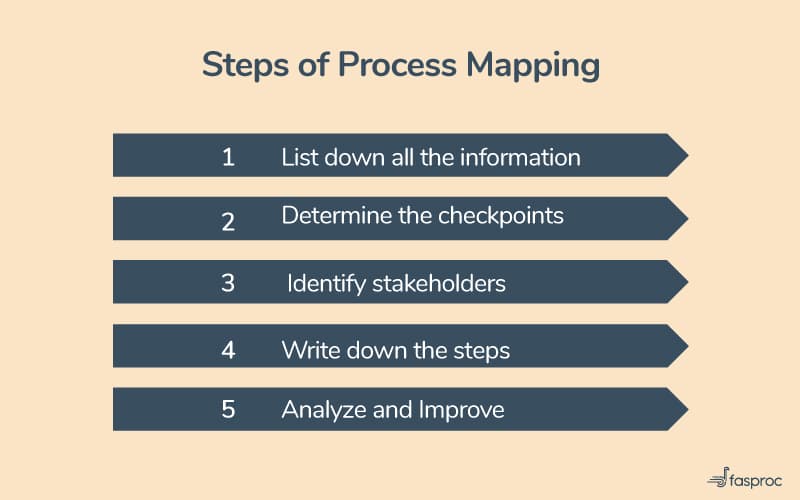Businesses use process mapping to enhance the functionalities of their business. While you understand the answer to what is process mapping in this blog, you will gain an understanding of different aspects attached to its core concept. Process mapping is a much wider subject than just a few flow charts. Here in this guide, we have tried to cover everything about process mapping.
Short on time? Jump around any section
What is Process Mapping?
Process Mapping is the art of creating a visual workflow after identifying all the steps and objectives of that process. When you identify your core business processes, you map it down through different ways of process mapping. It would help your business and all the stakeholders involved in the process to better understand the functionality of the core and side processes.
What are the Benefits of Business Process Mapping?
Now that you have understood what is process mapping, here is the answer of why process mapping is required. These benefits will clear out any possible confusion you may have on the importance of process mapping.
-
Clear direction
If you are asked to reach the coffee shop, you’ll find a way and get there. If you are already given the way to the coffee shop, you would just reach there faster.
If you have a business regardless of the number of people working in, process mapping will help everyone gain awareness about the process. It will give a clear and accurate picture of the business functionality. The stakeholders involved in the process will know their role and how much involvement they have to show.
-
Faster Decision making
When everyone is aware of their responsibilities and priorities, work becomes smooth. In fact, it is one of the core factors that influence decision making. This results in a faster decision making process. There is little to no room of friction between two individuals’ responsibilities when the processes are mapped out perfectly.
-
Track time
When processes are mapped out on a paper, you would be able to map out exactly what amount of time each step takes individually. You can track this time and make comparison reports. You can even improve the processes by adding new aspects or removing older gaps from it. Tracking time helps you analyze the pace of your processes which will eventually become a process performance metric.
What are the Different Methodologies of Process Mapping?
There are different methodologies you can apply while process mapping. Here, we have mentioned a few popular ones.
Value Stream Mapping (VSM)
Value Stream Mapping is also known as “Material and Information Flow Mapping”. Here you create a visual diagram of value added by each stakeholder at each step of the process. This method calculates value addition as a measure of determining the importance of each stage. First, create a process of your business, then attach it with the employees involved and the materials used.

Data Flow Diagrams:
‘Data Flow Diagrams’ is relatively easy to understand. You need to find the flow of data/information in the process and make a diagram of that flow. Once the process starts, data keeps on transferring from one step to another, all you need to do is map it out on a paper.
For example, Blogging is a process. The first step here is to find a topic to write on. That information is then transferred to the writer who creates the draft. The first draft is transferred to the designer who adds images to the blog. Finally, this information is transferred to the publisher who publishes the blog.
Business Process Modeling Notation (BPMN):
Business Process Modeling Notation is another popular methodology of process mapping. It is widely known as BPMN. Here you create a graphical representation of your process through flowchart like symbols to represent the beginning to the end of your process. It is so popular because it is simple. But there is one problem with flowchart. They are rigid and academic. It restricts flexibility and creates a lot of gaps in the practical environment. If your company still requires you to create a flow chart, here are the steps. You create an oval shape to start or end the process. You create rectangles for each task and diamond wherever you have a choice to be made.
The example taken here is of a new employee joining the company. For simplicity purposes, we have taken an example of providing a laptop to the new employee.
The final result is something like this:

Steps of Process Mapping
After understanding the different methodologies of process mapping, we will describe the steps of process mapping. These are just general steps that you can follow and not rigid guidelines. Every company has different sets of problems and challenges in process mapping. The best thing you could do is to learn from your mistakes and develop a plan.

-
Step 1: List down all the information
Gather all the necessary information that you need to create a process map. This would include listing down the stakeholders involved in the process, things you will need to complete the process, the time taken at each of the stages, and any small details that you can see. Observe your business processes and write it down.
-
Step 2: Determine the checkpoints
Each process will have different checkpoints. Start and end are two common checkpoints in each process. Determine other checkpoints in the process that you are planning to map out. There are chances that your process will have multiple ends. Make a note of these points. It’ll help you later in process mapping.
For example, fulfilling the IT requirements of your staff is a process. At most times, you can provide to the requests made by the staff, many times you might have to make them wait as you purchase the item and at times, you might have to decline the request if it is unreasonable. This is an example of a process with multiple ends.
-
Step 3: Identify stakeholders
It is important to make everyone aware of their duties and roles at each stage of the process. That is why while you are creating the process map, you must identify all the people attached to it. Once you have identified all the stakeholders, write them down, invite them to a meeting and make them aware of their role. Also, try and make the processes flexible. Trust your people to make decisions up to a point and make them aware of the gravity of the situation.
-
Step 4: Write down the steps
The most important aspect of process mapping is that you list down these steps according to the methodology that you selected. Make sure you do not miss out on any step. In order to refine these steps, run a simulation of the process while you are writing them down. This will help you get a clear idea of what steps are you missing out on.
-
Step 5: Analyze and Improve
As we always love to say at Fasproc, “No process is perfect”. You will have to develop enhancements and refine it. You can read about many ways of achieving business process optimization. Read the quantitative metrics of your processes and analyze them for any scope of improvement.
Bottom line
That was our beginner’s guide to process mapping. You will slowly be able to identify and map out optimized and fast processes out of your business. Fast Process Automation is the key to achieve success in your business in today’s time. We are building the fastest process automation platform, Fasproc that would help you design and automate your processes within minutes. Be a part of our beta list and get early adopter’s benefits along with bragging rights.
If you have any queries or questions, leave them in the comments down below. We would be more than happy to address your problems.


Trackbacks/Pingbacks